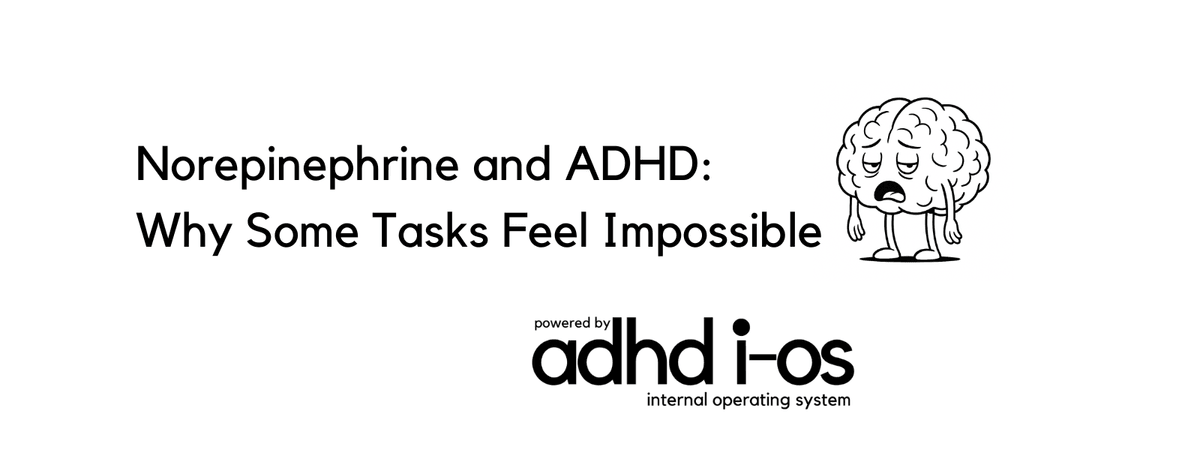Norepinephrine and ADHD: Why Some Tasks Feel Impossible
Norepinephrine and ADHD: Why Some Tasks Feel Impossible
Norepinephrine and ADHD: Why Some Tasks Feel Impossible
Norepinephrine (also called noradrenaline) is a powerful neurotransmitter and hormone. It’s a key player in your brain’s alertness, energy, and attention systems. Think of it as your brain’s “stay awake and focus” switch.
It helps regulate:
- Wakefulness and alertness
- Sustained attention
- Stress responses
- Mental energy and reaction time
When norepinephrine levels are balanced, your brain can turn on, tune in, and respond to what matters. Here’s our guide to the ADHD brain, and a deeper dive if you want a closer look!
Imagine your brain standing in front of a giant switch labeled “FOCUS”—and struggling to flip it to “ON.” That’s what low norepinephrine can feel like in ADHD: the power’s there, but the connection flickers just when you need it.

Your Brain May Be Low on Norepinephrine
If you have ADHD, your brain may produce less norepinephrine than average. Or, it may struggle to use what it does make. These conditions can cause your attention system to short-circuit, especially during low-stimulation tasks.
That means:
- You might feel mentally undercharged during routine activities
- It’s harder to regulate when and how much energy your brain uses
- Stressful moments can feel overwhelming rather than energizing
What Low Norepinephrine Feels Like
When your brain’s norepinephrine levels are running low, everything feels harder, slower, and more exhausting. Even if the task isn't particularly large, it still causes fatigue. Here’s what norepinephrine dysregulation can look like in everyday life:
- You feel exhausted after a simple meeting or email
- You sit down to focus but instead feel foggy, sleepy, or restless
- You zone out during conversations even if you're trying to listen
- You panic under pressure or freeze entirely
It takes forever to ramp up, and your brain doesn’t always respond to “just get started.
How to Support a Norepinephrine-Starved Brain
While we can’t change our baseline brain chemistry, we can support it with smart strategies. Try these:
Add Stimulation
Play upbeat music. Use standing desks. Chew gum. Work in a lively space. ADHD brains thrive when the environment provides just enough stimulation.
Create Urgency
Your brain often needs a reason to care. Use countdown timers, make fake deadlines, or set up mini challenges with an accountability buddy.
Move First
Physical activity is one of the best natural ways to boost norepinephrine. Even a 5-minute stretch or a walk can help. Exercise has been shown to increase norepinephrine and dopamine.
Protect Your Energy
Don’t wait until you crash. Take intentional breaks before burnout hits. This helps preserve your limited mental fuel.
Start Tiny
When your brain resists big tasks, go micro. “Open the document.” “Write one sentence.” Small starts can kickstart the norepinephrine system.
Build The Right Systems for Your Brain
If you’ve ever thought, “Why can’t I just start this simple thing?”—norepinephrine might be the missing piece.
Your brain isn’t broken, but it may be inefficiently fueled. Some tasks feel impossible not because you’re unmotivated or lazy, but because the chemistry that powers attention and alertness needs support.
With the right tools, you can build systems that work with your brain, not against it.
Want more science-backed ADHD tools and insights?
Explore our Neuro Library and join the adhd i-os community today for real talk and support that actually makes sense for how your mind works.

